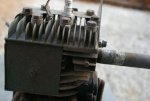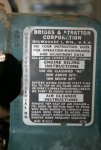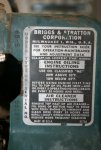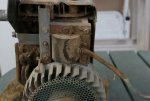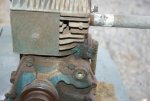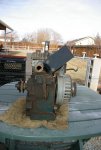silver1
Well-Known Member
- Joined
- Oct 4, 2012
- Threads
- 81
- Messages
- 415
I have a 1955 California Trimmer with a 2 Hp Briggs. I'm looking at the manual and it calls for 20-20w oil above 32F and 10w below 32F. I don't think
I will be mowing the lawn below 32F. I remember 1955. No self serve then. Full service, sometimes by two people.
Is that true with "todays" oils? Is a blend just as good or better?
It also says to remove the head and clean the valves and piston every 300 hours.
It should have a steel gasket that I would guess could be re-used. The head bolts are not very tight. What is the torque value?
A beautiful day out. Near record temps. in the west. The east can send some snow out here! :laughing:
I will be mowing the lawn below 32F. I remember 1955. No self serve then. Full service, sometimes by two people.
Is that true with "todays" oils? Is a blend just as good or better?
It also says to remove the head and clean the valves and piston every 300 hours.
It should have a steel gasket that I would guess could be re-used. The head bolts are not very tight. What is the torque value?
A beautiful day out. Near record temps. in the west. The east can send some snow out here! :laughing:

